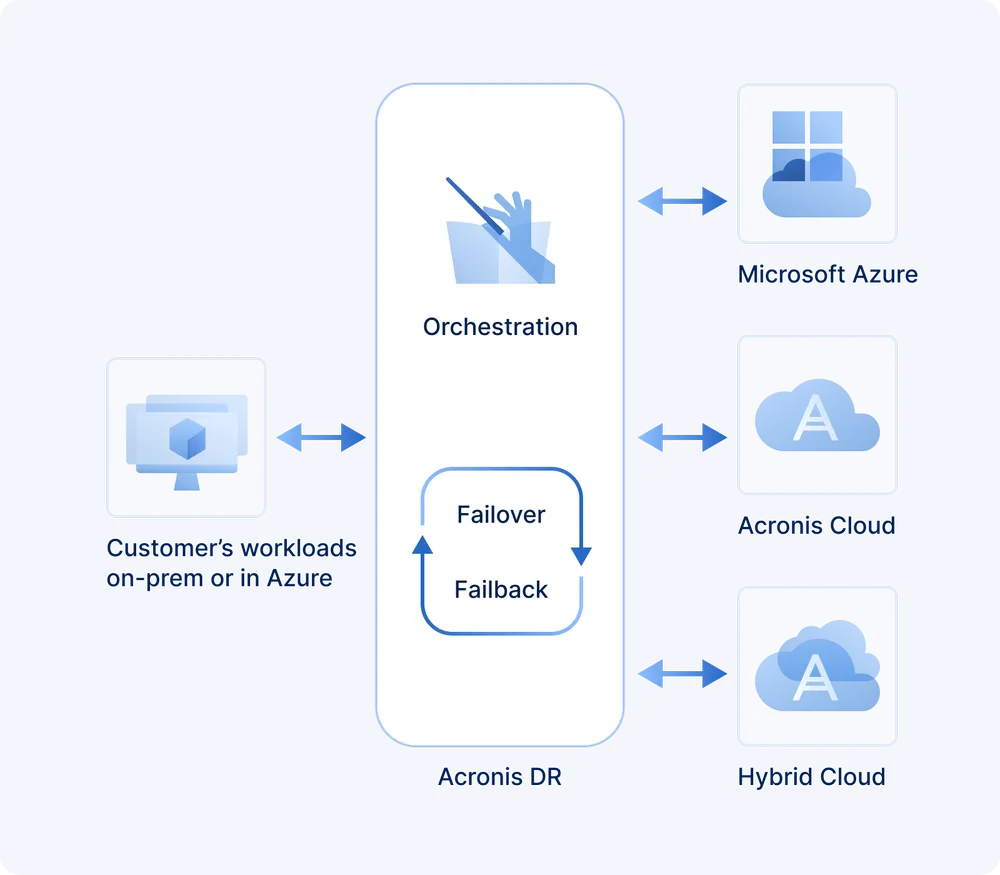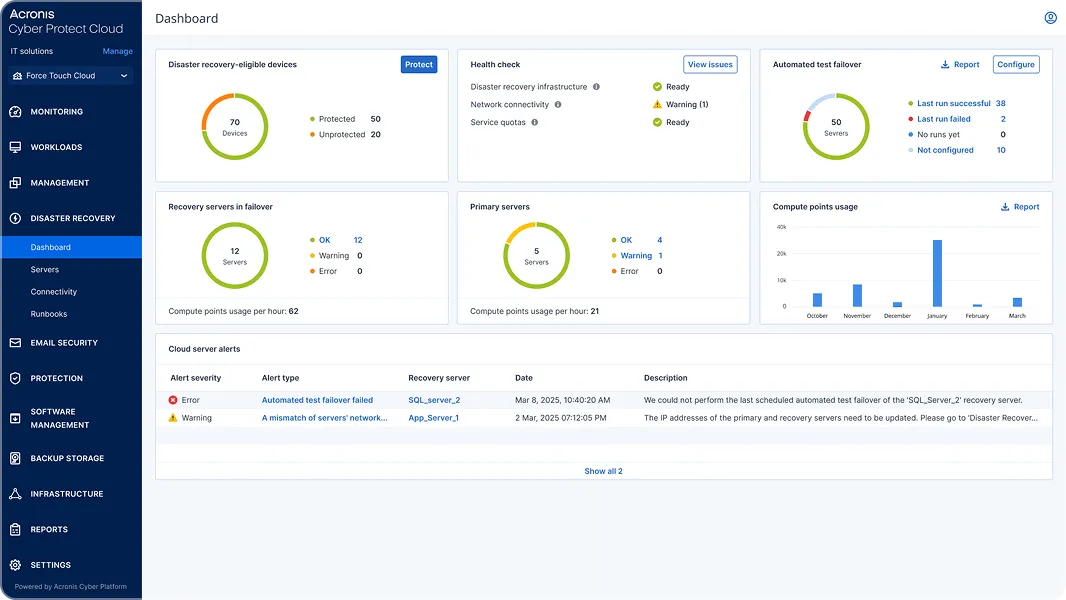Disaster RecoveryRapidly recover from cyberattacks and other unplanned outagesAcronis Disaster Recovery lets you securely spin up full production environments in minutes with no extra hardware. One console covers backup and DR with multi-cloud failover, so service providers meet strict SLAs without breaking the budget. Disaster Recovery datasheetDownload FileUltimate Cyber Insurance guideDownload File |
|
| Included | Standard | Advanced |
File, image, and applications backup | 🔷 | 🔷 |
Local recovery with Instant Restore | 🔷 | 🔷 |
Test failover | 🔷 | 🔷 |
Automated test failover | - | 🔷 |
Cloud-only VPN connection | 🔷 | 🔷 |
Production and test failover to Acronis Cloud: Ensure quick and easy automated failover of the client’s production environment | - | 🔷 |
VPN-less deployment option: Connect clients’ quickly and easily with point-to-site connectivity | - | 🔷 |
IPsec Multisite VPN support, L2 site-to-site open VPN: Easily support clients with multiple sites that are hosting critical workloads | - | 🔷 |
Multiple templates: Set up disaster recovery plans for your clients quickly and easily | - | 🔷 |
Runbooks: Simplifies and speeds up failover of multiple machines to a cloud recovery sitebooks: Simplifies and speeds up failover of multiple machines to a cloud recovery site | - | 🔷 |
Custom DNS configuration: Provide flexibility by setting up custom DNS configurations | - | 🔷 |
Looking for help?
Frequently Asked Questions





















